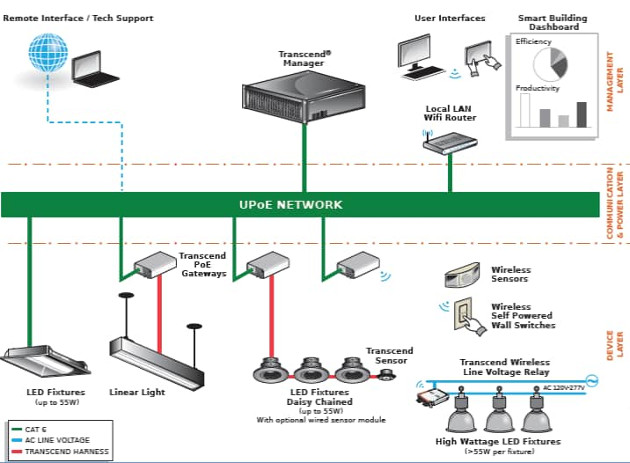(*) http://www.mouser.com/applications/connected-intelligent-led-lighting-networks/
When we talk about LED lighting, many just think of a system which consists of a power supply that supplies power to a set of LEDs in a lighting system.
However, if you think of smart buildings, a grid which powers LEDs in a lighting system can do much more than simply light up.
In fact, taking advantage of an IP-based infrastructure, the lighting system can be an intelligent network with several functions and this is exactly what the articles explore.
In the basic idea, the lighting network can be controlled by a smart central, but since this network is intelligent, it can be used for other purposes.
For example, the same network can be used to control ventilation systems, heating, and even sensors which make the comfort of a home or workplace automatically controlled to meet the needs of the people in it.
The basis of the technology, according to the document, is in PoE, or Power Over Internet in which the physical means used to send the signals can also be used to send power.
This causes objects which are within the path of the network to have access to the internet using the same wiring that power the LEDs.
The lighting network then becomes part of the IoT or Internet of Things. The image below, from the Mouser document gives an idea of ??everything that can be done.

For readers wishing to know more and also accessing extensive documentation available on Mouser which allows you to find the components that lead to a practical application, we suggest accessing the link given at the beginning of the article.



